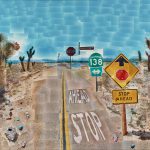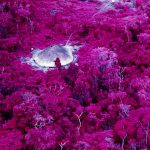[:pb]Sumário 11
Publicado em: 11 de October de 2016THIS ISSUE MARKS THE FIFTH ANNIVERSARY OF ZUM, a biannual publication which offers a carefully selected and wide-ranging vision of Brazilian and international visual production. As conservative winds sweep through various regions of the planet, ZUM is committed to offering its readers images on themes that are both relevant and urgent. For more than ten years, Zanele Muholi has confirmed the power of portraits in her series Faces and Phases, in which hundreds of black lesbian and transgender individuals confront violence, prejudice and social patterns. Other conflicts are discussed on the edition: in the series that Arthur Omar did for ZUM with superimposed images of his trip to Afghanistan in 2002, shortly after it was invaded by the United States; in the political work of the German artist Gerhard Richter, concerned with the clash between photography and painting; in the ethnic cleansing in Ecuador a hundred years ago, suggested by the images of Ecuadorian José Domingo Laso; and in the shocking collages of Thomas Hirschhorn, constructed from scenes of explicit violence which, according to the artist, are intended to shake the spectator from lethargy.
Social issues are also central to the work of the collective Trëma, which won the ZUM/IMS Photography Grant in 2015. Trëma travelled to Congo and to Colombia to photograph the memories of two immigrants who arrived in Brazil last year, using the accounts given here as the basis for the pictures. To ensure an atmosphere of celebration, ZUM pays homage to the brilliant Fernando Lemos, who looks back on his career and discusses the principles of his artistic practice by means of the photographs he took in Portugal between 1945 and 1952, some of them hitherto unpublished. In a penetrating analysis of the selfie, the Catalan Joan Fontcuberta shows how photography is ceasing to be a means of preserving memory, to become instead a means of communication. This issue opens with eight historical xerographic narratives from Mario Ramiro. The artist and professor features again in the magazine, with a fragment of his doctoral thesis, which examines the spirit photography produced in Brazil and explores the relationship between photography and truth, science and religion. When we talk about images, not everything is what it seems.







